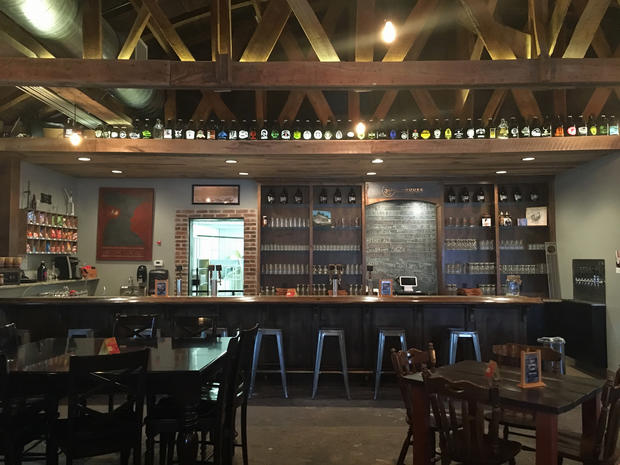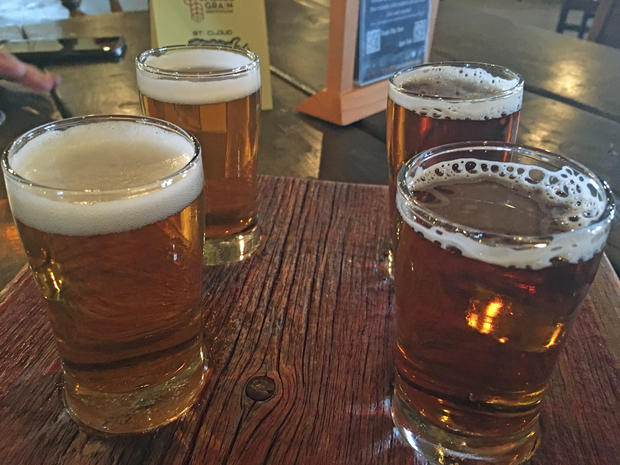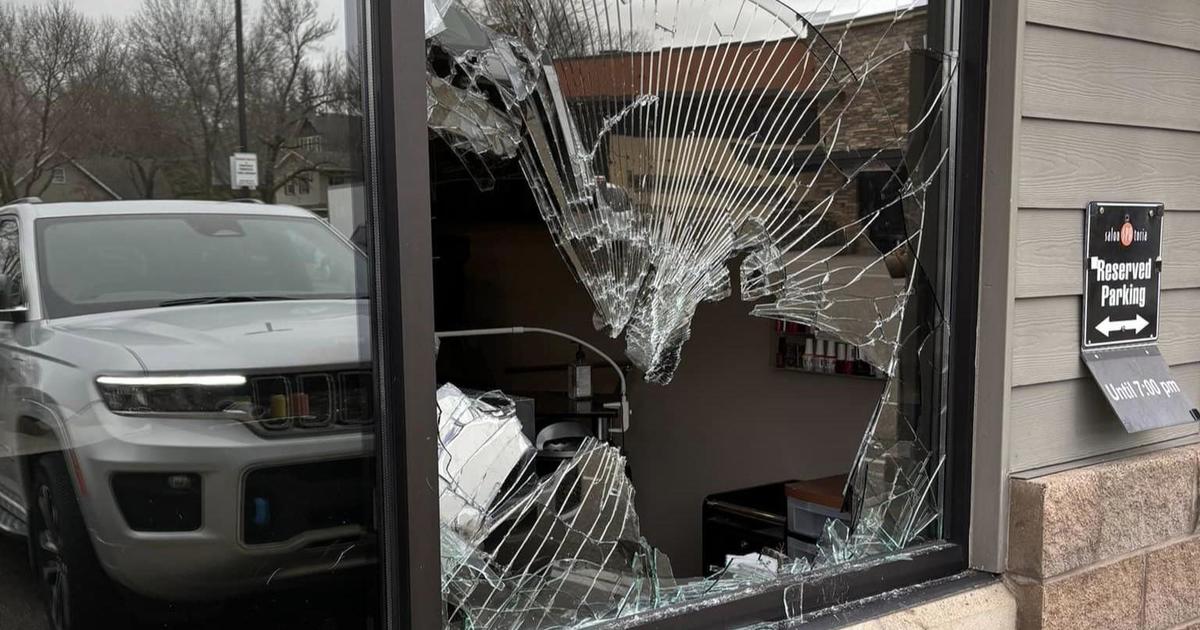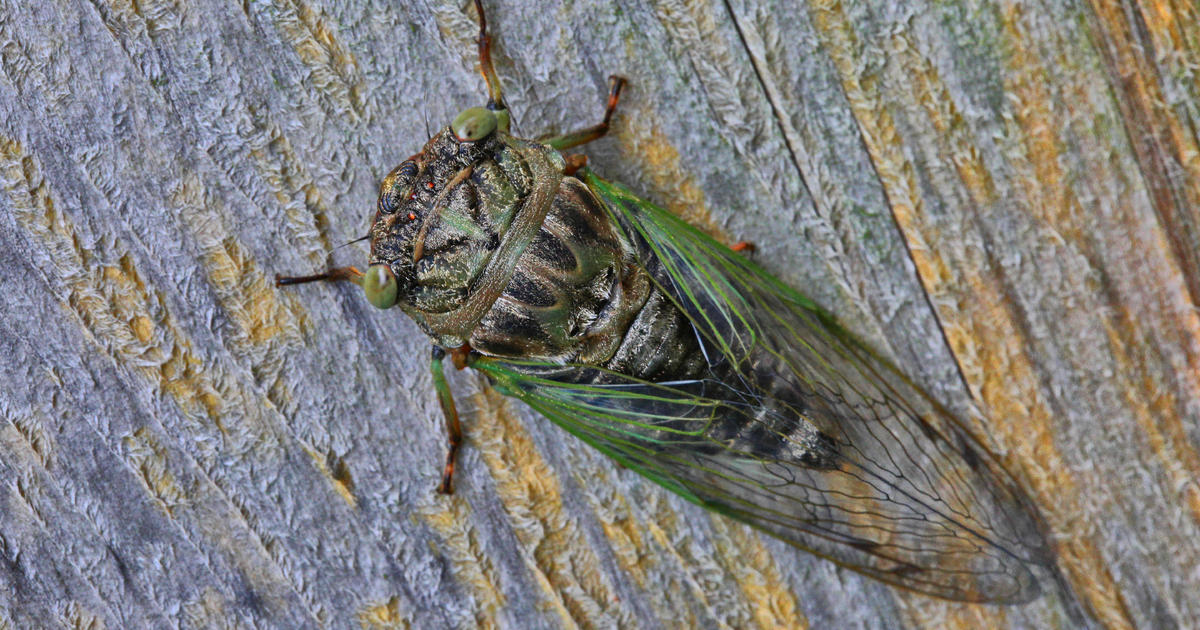Tap Talk: Annandale History Built Into Spilled Grain Brewhouse
Over the last five years, the craft brewery movement has grown exponentially in Minnesota. The Associated Press says licensing records show two-thirds of Minnesota breweries have opened just since 2010. So, we decided to help you – and your livers – keep up with the taproom trend by stopping by some of these Twin Cities brewhouses. Next, Tap Talk takes a trip northwest on Highway 55 to visit Annandale's Spilled Grain Brewhouse.
Community and craft beer go hand-in-hand.
Ask almost any brewer or brewery owner, and they will site one of their goals as giving back to their community, neighborhood or town. Breweries are even often named after the area where they are formed.
While this is no different for Spilled Grain Brewhouse, the Annandale brewery takes it one step further by alluding to the town's history not only in their name but in their structure.
The inkling for Spilled Grain Brewhouse began as early as 2009.
In 2006, Dave Hartley bought the building at 300 Elm Street, right off of Highway 55, for his cabinet shop. The building had stood in Annandale since at least the 1940s, when it was a store room for the Ford dealership in town.
Hartly kept his shop in the building for three years but outgrew the space in 2009. After buying a bigger building for his shop, his wife and he knew they could use the space as more than just storage.
They began to brainstorm what they could bring to the town and they kept coming back to the idea of a brewery.
Meanwhile, Jacob Schnabel was hard at work perfecting his craft.
In Christmas 2005 he received a brewing kit and from there continued to explore the world of craft beer.
"I had gotten into beer in college and never really enjoyed the whole macro lager thing," co-founder and head brewer Jacob Schnabel said. "I'm an engineer by education and it was just one of those things where it was a challenge. I've always been about flavor."
Schnabel said his engineering background led him to be curious about how things worked including beer.
It would be another five years before Hartley approached Schnabel about opening a brewery in his old cabinet shop.
But in 2014, Hartley and Schnabel were joined by Josh Hart and Dan Seaberg. And on Memorial Day 2014 the four, all from St. Cloud and Annandale area, began building out their local brewhouse.
Spilled Grain Brewhouse
Follow them: on Twitter at @SpilledGrain or Facebook at Spilled Grain Brewhouse.
Owners: Josh Hart, Dave Hartley, Dan Seaberg and Jacob Schnabel
Brewer: Jacob Schnabel
Location: 300 Elm Street E, Annandale
Hours: Mondays – Wednesdays: Closed, Thursdays: 4 – 10 p.m., Fridays: 3 – 11 p.m., Saturdays: 11 a.m. – 11 p.m. and Sundays: 12 – 6 p.m.
Contact: 320-274-1129
View more photos from Spilled Grain Brewhouse here.
It's fun to learn that much of the inspiration for the brewery came from the town's history. So, speaking of inspiration, where did the name Spilled Grain come from?
Schnabel: In 1980 there was a train derailment in town. At the time it was the Soo Line, now it's Canadian Pacific. [Just down Highway 55,] where the old grain elevators used to be, there was a derailment that dumped seven cars of Cargill grain all over the tracks. We're right across from the train tracks and it was a memory one of my partners had from growing up in town, so we decided to name it after that.
Wow! What a unique story to take your name from. Another great way to tie it back to the town as well. So let's talk beer, what do you normally have on tap?
Schnabel: We have at any given time anywhere from 12 to 14 [beers] on tap. We have 12 standard taps and two nitro taps. Sometimes we have a beer both on standard and on nitro. In terms of our beer we have three that we consider our standards, but, now with the expanded taps, we have others that have kind of morphed into standard beers. [The standards are] our Crooked Rafter, which is our Kolsch. That was the first beer we brewed. [It's an] easy drinking, German style ale. [Then] our Highest Point IPA. Then we have our Bungalow Island and that's our American Stout. We have those on tap at all times. We also leave our Apple Graph on, which is kind of like a hard cider. It's a beer, but it's a blended beer. It tastes like a hard cider.
Sounds like a very solid base of flavors. What sort of seasonals do you offer?
Schnabel: We still have our Honey Nut Brown from this fall. We have our Christmas beer on. Raspberry Red is pretty popular in the fall. We also do a series of what are called SMaSH beers.
SMaSH beers? What are those?
Schnabel: SMaSH beers are single malt and single hop beers. They kind of give us an ability to showcase a certain hop and a certain malt variety. [We've done three] and we got a couple others coming. So, the first one we did was a Maris Otter malt, which is a British heritage malt, with Citra hops. Second one was Vienna malt with Simcoe hops. The third one is Golden Promise, a Scottish version of Maris Otter, with Mosaic hops. It's probably my favorite.
That sounds like it must be a fun beer to concoct since you get to decide what is highlighted. Tell me, what would you serve to someone who is new to craft beer?
Schnabel: Especially out in this area, we're still educating the population in terms of beer. So our employees do a great job of finding out what flavors they like. I would definitely start still with our lighter variety, probably our cream ale. That's the closest we have to a more mainstream beer. The Kolsch is a little bit more flavorful than that. But either one of those.
It makes sense that there is still education happening. There's still education happening in the Twin Cities! Plus, it seems there are just endless things to learn about beer. So, on the opposite end, what would you serve someone who is very knowledgeable about beer?
Schnabel: I would definitely start with our SMaSH series because it's so simple in terms of ingredients, it's one hop and one malt, but depending on how it's brewed [it's drastically different.] So I think this really showcases the way we use hops and the way we layer things in the kettle. But, if anybody has been in here that says, 'I love beer, what do you suggest' or, 'Give me your best beer,' I'll usually go to our SMaSH #3 to start, followed possibly by our IPA.
You mentioned earlier when talking about SMaSH that you have some more flavors in the works. What are you brewing up?
Schnabel: Everything we've done so far has been pale ales, but we're actually going to do a pilsner coming up. Then, we're going to do a SMaSH old ale which we're going to boil for like eight hours. [In that] we're actually going to use a Golden Promise again and then boil it continuously to get that caramelization from the kettle, and then it will just be EKG hops.
Sounds like despite having just a few ingredients that the brewing process is quite intricate. Tell me, what is your best selling beer?
Schnabel: Definitely right now it's our Kolsch, followed by our IPA. That ebbs and flows per weekend but on an aggregate level it's our Kolsch.
That seems to be the trend, either it's the lightest beer or the IPA. What is your favorite beer that you brew?
Schnabel: SMaSH #3. Followed probably by our Doppelbock, which we haven't released yet. I'm a big proponent of, especially for big beers, cold, aging. So, we've been cold aging our Doppelbock now for 14 months. We're releasing it at the St. Cloud Craft Beer Fest.
Love to hear about new flavors coming out! Are there any other releases you can share?
Schnabel: I'm hoping to do some more firkins, to do more [blending] with our stout -- like blueberries or cherries. We're going to continue with the SMaSH series, just because that's a lot of fun to play with. We also have a Baltic porter that we're aging that will probably be out February or March.* We'll have our Bock Fest on March 4, and we'll be releasing our Bock that day. We have an English IPA that will be on tap in the next coming week using some experimental hops. So, that'll be fun.
*The Baltic Porter, along with the Old Ale, were awarded at the Best of Craft Beer competition in Oregon. The porter received a silver medal and the Old Ale a gold.
Sounds like you have a lot on tap, pun intended! So, I wanted to ask, I saw an advertisement for Soup Sundays. What is that all about?
Schnabel: We're not licensed for food, but we can give it away if we don't charge for it. So, on Sunday's we just put a big roaster pan of whatever the soup of the week is. We don't have TVs in here but we do have a large projector, so we can use that whole front wall for if people want to watch football or the Wild game. We usually have football on on Sundays. So people usually come in, grab some soup and drink some beer. It's just a nice little way to get people in the door. Unfortunately, this was only during football season. We have started a series of small concerts, though. My wife has done an excellent job of booking fairly high end talent. We usually do it on Tuesdays, three to four times a year.
That's great that you are giving back to the community that way. I'm sure they love coming in for soup during the fall football season. So, now that you've been open a little over a year, what do you think is the most challenging thing about opening a brewery?
Schnabel: Gosh, the federal government doesn't make it easy. We just had the dickens of the time getting through the TTB. They actually lost our application once. We got waylaid probably three months longer than we should have been. The state of Minnesota was great, though. Thirty days and done. But in terms of actually starting one, just the capital outlay is probably the biggest challenge of anything. We were very fortunate that my partner owned this building because that is a huge stopping point for so many potential breweries. It's the number one issue for a lot of breweries, so we were really fortunate.
I can see how having a building to start is a huge advantage. So, tell me, where do you see Spilled Grain growing to in the next five years?
Schnabel: We should still be here. I don't think the taproom will ever go away. We've been very well received by the town. The response has been fantastic. Our employees are excellent and its fun. We love this space we love what this offers to the town. We've heard over and over again that it's fantastic that Annandale finally has a place like this in the town for people to come to and hang out that's not the normal bar scene. In five years, there's the absolute possibility of production brewery. I don't think we'll ever try to get Fulton or Indeed size, I just don't see that as us. But I can see us at least trying to serve our general area and a 40 – 50 mile radius around us.
What about for Minnesota? Where do you see our craft beer scene going?
Schnabel: I think we're at a very unique juncture because we've had such rapid growth since the Surly bill. I see it slowing down a bit, but I still think there is a large potential for growth in towns like Annandale. I see us getting back to the pre-prohibition model where there's no reason any decent sized town can't support a taproom like this. And that's awesome. I think that's absolutely amazing. I'd love to see that. I could easily see another 25 – 30+ in the next 3 to 5 years opening up.
What about for craft beer – do you think there will be a new "big" flavor following IPA and sours?
Schnabel: Everything is cyclical. I think we're going to get back into sessionable beers, and maybe the session IPA is good evidence of that already. I think we're going to start seeing more pilsners, more APAs and more session IPAs. I think we're going to start seeing more lower alcohol beers that you can drink a lot of, which would help to bring people over from macro beers because we still only own a small percent. But big beers will never go away. I think it'll just keep recycling itself. What's old is new.
I think as you alluded too, perhaps the push into smaller markets will also cause this cyclical trend. So, aside from drinking it, what is your favorite thing about beer?
Schnabel: The variety that's available. I love the fact that you can change one thing in a beer and it can be completely different. I always say it's both a science and art form, which is why I think I enjoy it. I love the science side, obviously with the chemistry and all that, but I also love the ability to express yourself and try different things. Beer will never be finished. There's always something new. We're always learning new things about it. I just think that is so cool that we're constantly going to be improving upon what we have already as well as the hundred years old traditions.
I think the combination of art and science really appeals to a lot of brewers. As you said, it's intriguing to learn how it works but know that you can tinker with it and create a totally new product. Finally, how would you describe Spilled Grain in just one word?
Schnabel: Family. We're very family oriented. That's one of my favorite things. I think that is another reason why Annandale has accepted us so much, because it is such a family establishment in a world that is not necessarily viewed as such.





